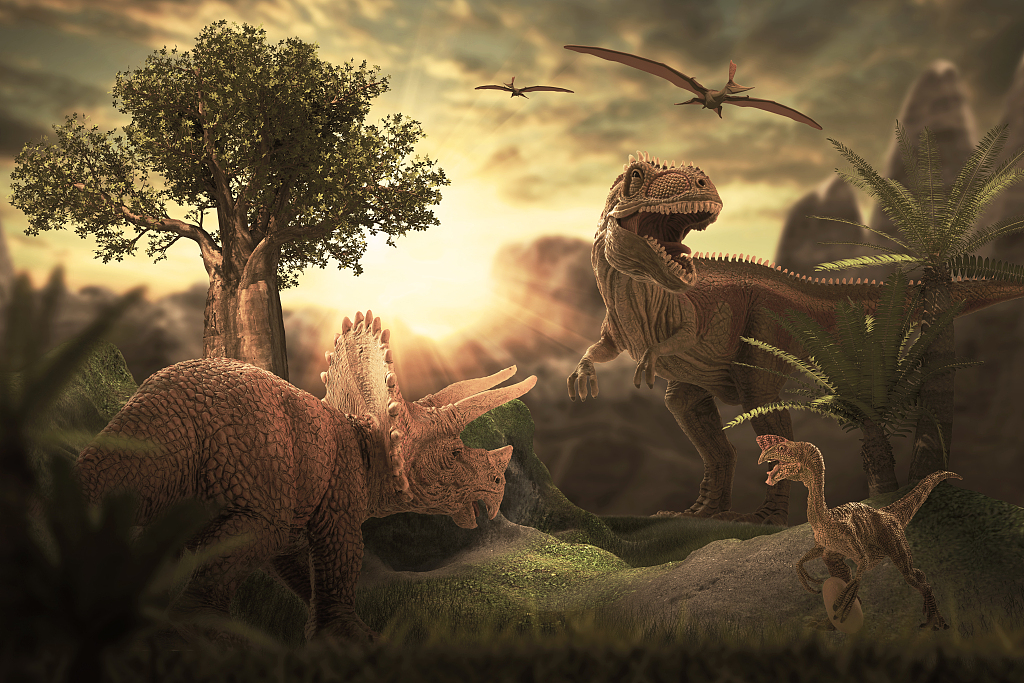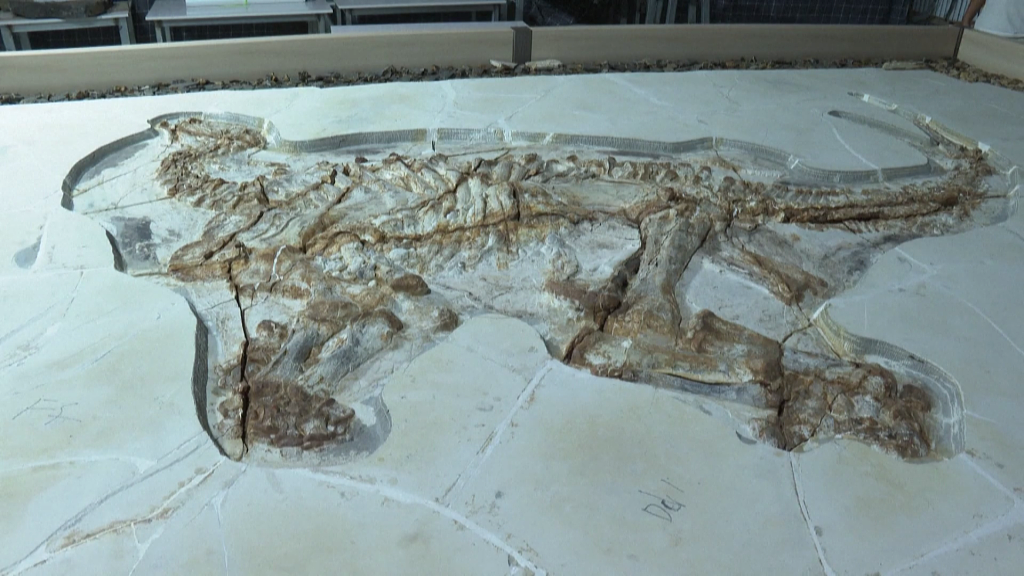
Copied
A research team led by Chinese scientists has pinpointed the timing of the mass extinction of land life that occurred more than 200 million years ago, according to Nanjing University.
The team's study reveals that different ecosystems respond at different rates to environmental degradation, helping to more accurately piece together the process of mass extinction.
 Illustration shows the moment of the asteroid colliding with the earth, which might be the cause of mass extinction. /CFP
Illustration shows the moment of the asteroid colliding with the earth, which might be the cause of mass extinction. /CFP Illustration shows the moment of the asteroid colliding with the earth, which might be the cause of mass extinction. /CFP
The mass extinction at the end of the Permian period was the worst mass extinction event in geological history, wiping out more than 80 percent of marine species and about 90 percent of land species, said Shen Shuzhong from Nanjing University, who led the research.
Previously, scientists generally believed that the mass extinction occurred about 252 million years ago, but there was a lack of detailed research on its process in different regions and ecosystems, said Shen, who is also an academician of the Chinese Academy of Sciences.
Now, after more than 10 years of field sampling and high-precision isotope dating, researchers from China and the United States have for the first time accurately determined the specific time of the mass extinction of terrestrial organisms in the low-latitude region at the end of the Permian period.
The researchers also compared the times of the land and marine extinctions at different latitudes, showing the characteristics of different ecosystems during the mass extinction.
The latest sampling and dating shows that at the end of the Permian period, the mass extinction of land life at low latitudes began 251.88 million years ago, at least 60,000 years later than the mass extinction of marine life, and at least 430,000 years later than the mass extinction of land life at high latitudes.
 Two plant-eating dinosaurs from the Jehol Biota dating back more than 130 million years ago are found in Chengde City, Hebei Province, September 7, 2023. /CFP
Two plant-eating dinosaurs from the Jehol Biota dating back more than 130 million years ago are found in Chengde City, Hebei Province, September 7, 2023. /CFP Two plant-eating dinosaurs from the Jehol Biota dating back more than 130 million years ago are found in Chengde City, Hebei Province, September 7, 2023. /CFP
The researchers also analyzed the changes in biodiversity at different latitudes before and after the mass extinction, based on the global paleontological database.
The results show that the mass extinction at low latitudes not only occurred later, but also had a relatively low extinction rate, which may indicate that the terrestrial ecosystem at low latitudes at that time had higher environmental pressure resistance.
Scientists can more accurately restore the process of mass extinction more than 200 million years ago based on the latest results, said Shen.
At the end of the Permian period, the mass extinction of terrestrial organisms first began at the high latitudes and gradually spread to the middle and low latitudes.
The collapse of marine ecosystems had its own unique pattern and occurred more rapidly, he added.
The study was published recently in the journal Science Advances.






